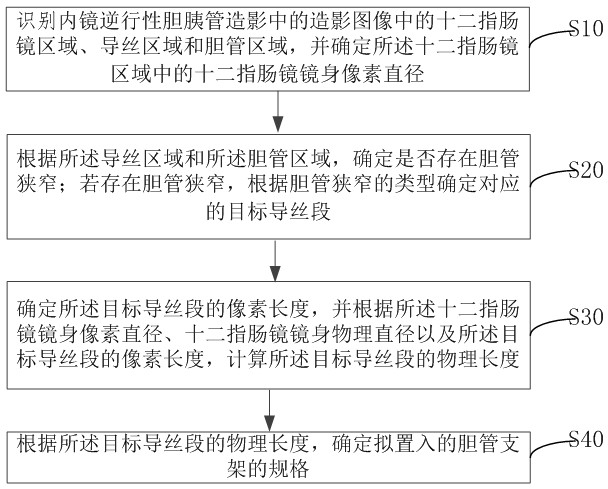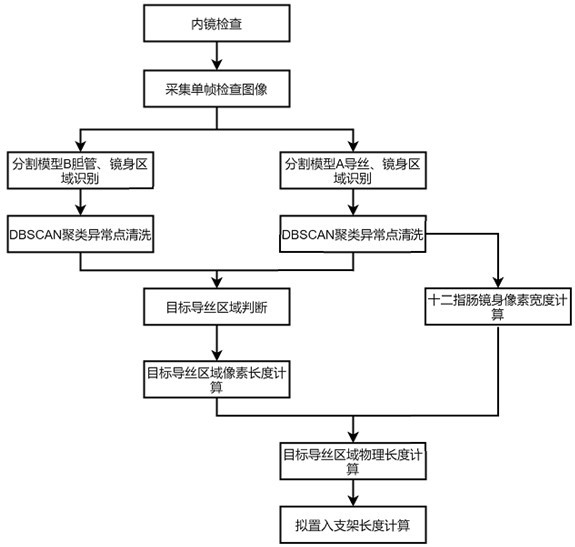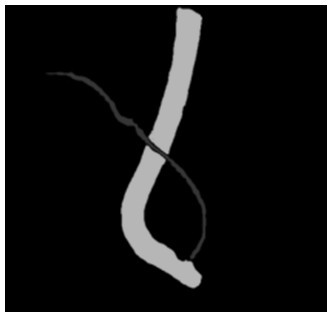Bile duct stent specification selection method and device
A technology for bile duct stents and bile ducts, which is applied to human tubular structures, bile ducts, image enhancement, etc., to achieve the effects of shortening the duration of radiation exposure, improving accuracy, and reducing radiation damage
- Summary
- Abstract
- Description
- Claims
- Application Information
AI Technical Summary
Problems solved by technology
Method used
Image
Examples
Embodiment Construction
[0030] S22. Determine whether the first guide wire region exists between the two second guide wire regions;
[0031] It can be understood that if there is a first guide wire region between two second guide wire regions, that is to say, there is a guide wire segment not covered by bile duct between two guide wire segments covered by bile duct, it means The wire segment between the two covered wire segments is not covered by the bile duct, i.e. the segment of the bile duct is very thin, e.g., above Figure 2c If the third guide wire EF is used, it is considered that the bile duct is narrowed in the middle.
[0032] If there is no first guide wire segment between the two second guide wire regions, then there is no mid-section stenosis. At this time, it is further judged whether there is terminal stenosis. The judgment method is: the first guide wire region corresponding to the end of the bile duct Whether the length of the guide wire is greater than 1.5cm, if it is greater than ...
PUM
 Login to View More
Login to View More Abstract
Description
Claims
Application Information
 Login to View More
Login to View More - R&D
- Intellectual Property
- Life Sciences
- Materials
- Tech Scout
- Unparalleled Data Quality
- Higher Quality Content
- 60% Fewer Hallucinations
Browse by: Latest US Patents, China's latest patents, Technical Efficacy Thesaurus, Application Domain, Technology Topic, Popular Technical Reports.
© 2025 PatSnap. All rights reserved.Legal|Privacy policy|Modern Slavery Act Transparency Statement|Sitemap|About US| Contact US: help@patsnap.com



